
-
Find the right food for your petTake this quiz to see which food may be the best for your furry friend.Find the right food for your petTake this quiz to see which food may be the best for your furry friend.Featured products
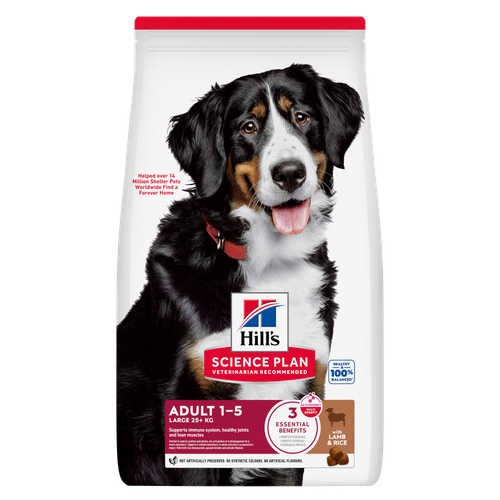 Large Breed Adult Dog Food
Large Breed Adult Dog FoodHill's Science Plan Large Breed Adult Dog Food with Lamb & Rice is a complete pet food, specially formulated with ActivBiome+ Multi-Benefit Technology.
This food is specifically designed to fuel the energy needs of large breed dogs during the prime of their life.Shop Now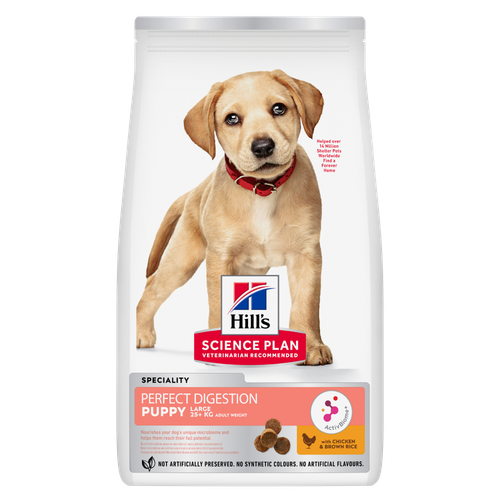 Perfect Digestion Large Breed Puppy Food
Perfect Digestion Large Breed Puppy FoodPrecisely balanced nutrition with Hill's ActivBiome+ prebiotic blend actively contributes to supporting digestive health and overall wellbeing to help your pet feel their best
Shop Now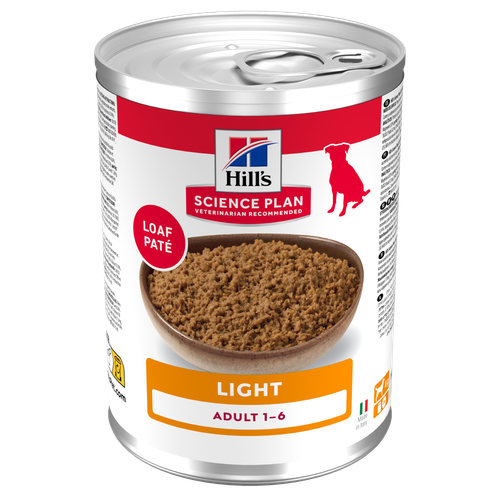 Adult Light Dog Food
Adult Light Dog FoodHill's Science Plan Light Adult Wet Dog Food is a complete premium pet food for adult dogs that tend to gain weight easily. This deliciously smooth loaf is formulated to deliver the appropriate amount of energy to support weight maintenance in adult dogs.
Shop NowFeatured products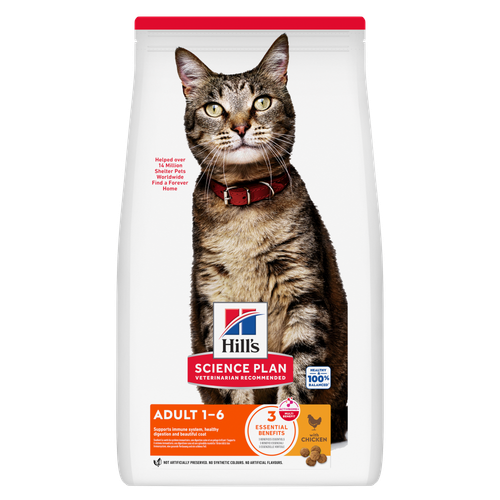 Adult Cat Food
Adult Cat FoodHill's Science Plan Adult Cat Food with Chicken is a complete pet food, specially formulated with ActivBiome+ Multi-Benefit Technology.
This food is specially formulated to fuel the energy needs of cats during the prime of their life.Shop Now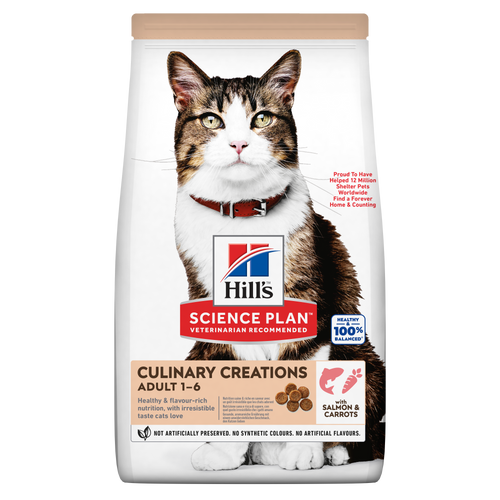 CULINARY CREATIONS ADULT CAT FOOD
CULINARY CREATIONS ADULT CAT FOODHill's Science Plan CULINARY CREATIONS Adult cat food with Salmon & Carrots was formulated to provide a great-tasting experience to cats. Its delicious flavour and texture are combine with essential nutrients to support cats' optimal health during the prime time of their life. Specially formulated with high-quality salmon protein, essential taurine for heart health & balanced minerals to support kidneys & bladder.
Shop Now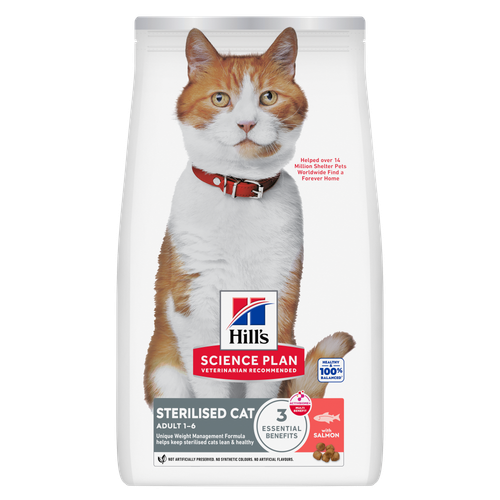 Sterilised Adult Cat Food
Sterilised Adult Cat FoodHill's Science Plan Adult Sterilised Cat Dry Food with Salmon is specially formulated with ActivBiome+ Multi-Benefit Technology. It is a precisely balanced nutrition, tailored to meet the needs of sterilised cats, to help keep sthem lean & healthy.
Shop Now -
Dog
- Dog Tips & Articles
-
Health Category
- Weight
- Food & Environmental Sensitivities
- Urinary
- Digestive
- Joint
- Kidney
-
Life Stage
- Puppy Nutrition
- Adult Nutrition
- Senior Nutrition
Cat- Cat Tips & Articles
-
Health Category
- Weight
- Skin & Food Sensitivities
- Urinary
- Digestive
- Kidney
-
Life Stage
- Kitten Nutrition
- Adult Nutrition
Featured articles Microchipping: The Facts | Hill's Pet
Microchipping: The Facts | Hill's PetThe government has announced that as of April 2016, all dogs in the UK must be microchipped by law.
Read More Pet Nutrition: What Makes "Healthy" Pet Food Healthy? | Hill's Pet
Pet Nutrition: What Makes "Healthy" Pet Food Healthy? | Hill's PetIn people, the right diet is very important. If you are eating the wrong way for your metabolism, activity level, age and lifestyle you could end up with health issues.
Read More The Incredible Science Behind Your Pet's Microbiome
The Incredible Science Behind Your Pet's MicrobiomeLearn what your pet's microbiome is, how it contributes to your pet's gut and overall health, and why nutrition is important in maintaining healthy microbiomes.
Read More -


You probably know a few humans who deal with dandruff, but did you know dogs get dandruff, too? Maybe you have noticed your pup scratching more often or have seen white flakes on their bedding. Besides irritated skin, these signs can also point to a skin condition called walking dandruff.
How do you know when dog dandruff warrants a veterinarian visit? Since the signs of canine dandruff can be very similar to other skin issues, it's important to know what to watch out for and the possible treatment options to consider.

The Facts About Dog Dandruff
Dandruff is the presence of dead skin cells on your dog's coat. Depending on the colour of your dog's fur it may be difficult to actually see the flakes, but they are often visible when they hop off the couch or put their head in your lap. There are many ways a dog's skin can get irritated. From excessive licking to a nutritional issue, the root cause of dandruff can sometimes be difficult to identify.
The first thing to ask yourself is whether you notice the dandruff all over your pup's coat or just in a particular area. Irritated skin in one concentrated spot could be due to a reaction to something your dog came in contact with, or it could be a more serious problem like an infection or parasite. Once you notice dandruff, consider visiting your vet for help. If you notice additional signs such as itching, reddened skin irritation, or scaly patches of hair loss then the best advice would be to consult with your vet immediately for further help. Since skin issues can have genetic, environmental, nutritional or parasitic causes, sometimes several different treatment options have to be explored.


Tasty Tips
Preventing & Treating Dandruff
There are a few things you can do to prevent dog dandruff and other skin problems. Trupanion recommends that pet parents start by grooming their dogs regularly. Removing matted hair leaves less of a breeding ground for parasites, and regular brushing encourages you to spend a few minutes checking your dog's skin and coat to catch any problems early on. You should also look for seeds, burrs and sharp plants or objects they may have picked up on a walk.
Your vet might suggest bathing your dog more frequently to prevent dandruff. Wag! advises using a specially formulated dog dandruff shampoo and making sure you dry your pet thoroughly after their bath.
If simple preventative measures like grooming and bathing are not ridding your dog of dandruff, discuss special food options or allergy tests with your vet. They can help you find a dog food with ingredients like omega-3 fatty acids and vitamin E that promote a healthy coat and immune system.

The Difference Between Dandruff and Walking Dandruff
A more serious possible cause for your dog's flaky, itchy skin is a condition called walking dandruff. MedVet clarifies that walking dandruff is a parasitic infection called cheyletiellosis that is caused by mites. If you notice your dog scratching, licking or biting their skin, check the area for hair loss, redness and scaly patches.
Walking dandruff is extremely contagious. The mites can easily spread to other pets in your household like cats and rabbits, and in about 20 percent of cases they can also affect humans, MedVet notes.
It is best to get your dog to the vet as soon as you notice they have dandruff coupled with redness or scaling. Unfortunately, there is no quick fix for walking dandruff. Your vet will likely administer a topical treatment called a dip that coats your dog's fur in a mite-killing medicine. Dips and other treatments may need to be repeated once or twice every week for up to six weeks. You should also bring any other household pets to the vet for mite treatment, and you may need to treat your home with a pesticide designed for killing mites and fleas.
No one likes an itchy and uncomfortable pup. Once their dandruff or other skin issues are addressed, hopefully you and your dog can enjoy more time doing the things you love, itch-free.


Chrissie Klinger is an educator, writer and mother of two children, three dogs and three cats. Her dog Jake loves sitting on her lap every chance he gets! She enjoys living an active and eco-friendly lifestyle in rural Pennsylvania.
Related products
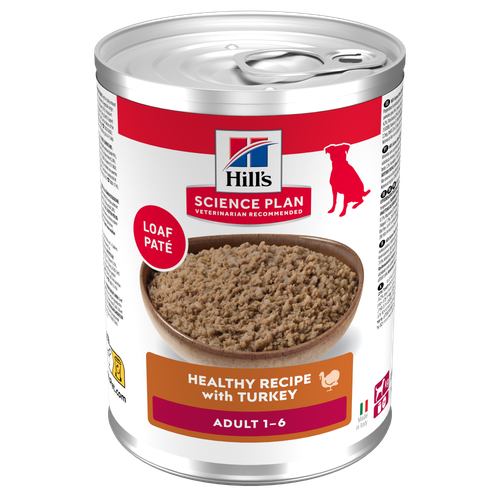
Hill's Science Plan Adult Wet Dog Food with Turkey is a complete premium pet food for adult dogs from 1 year. This deliciously smooth minced turkey loaf is formulated to deliver the appropriate amount of energy to support the needs of adult dogs.

Precisely balanced nutrition with Hill's ActivBiome+ prebiotic blend actively contributes to supporting digestive health and overall wellbeing to help your pet feel their best

Hill's Science Plan Large Breed Adult Dog Food with Lamb & Rice is a complete pet food, specially formulated with ActivBiome+ Multi-Benefit Technology.
This food is specifically designed to fuel the energy needs of large breed dogs during the prime of their life.

Hill's Science Plan Light Adult Wet Dog Food is a complete premium pet food for adult dogs that tend to gain weight easily. This deliciously smooth loaf is formulated to deliver the appropriate amount of energy to support weight maintenance in adult dogs.
Related articles

Gurgling tummies in turmoil are not good news for pets. Owners who have to clean up the unfortunate consequences, digestive problems are one of the rare downsides to owning a pet.

Learn to see the signs of an upset stomach in your dog, understand the triggers and explore some possible solutions.
Discover the causes, signs, and treatments of kidney disease in dogs and find methods of supporting your dog's kidney health. Learn more at Hill's Pet.

Dog obesity is a significant problem - learn more about helping your dog become trimmer and healthier through improved nutrition.

Put your dog on a diet without them knowing
Our low calorie formula helps you control your dog's weight. It's packed with high-quality protein for building lean muscles, and made with purposeful ingredients for a flavourful, nutritious meal. Clinically proven antioxidants, Vitamin C+E, help promote a healthy immune system.
Put your dog on a diet without them knowing
Our low calorie formula helps you control your dog's weight. It's packed with high-quality protein for building lean muscles, and made with purposeful ingredients for a flavourful, nutritious meal. Clinically proven antioxidants, Vitamin C+E, help promote a healthy immune system.

